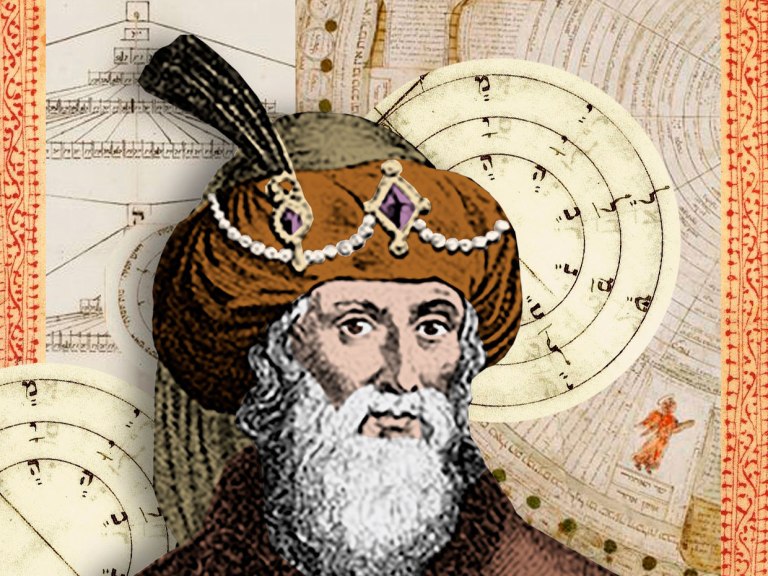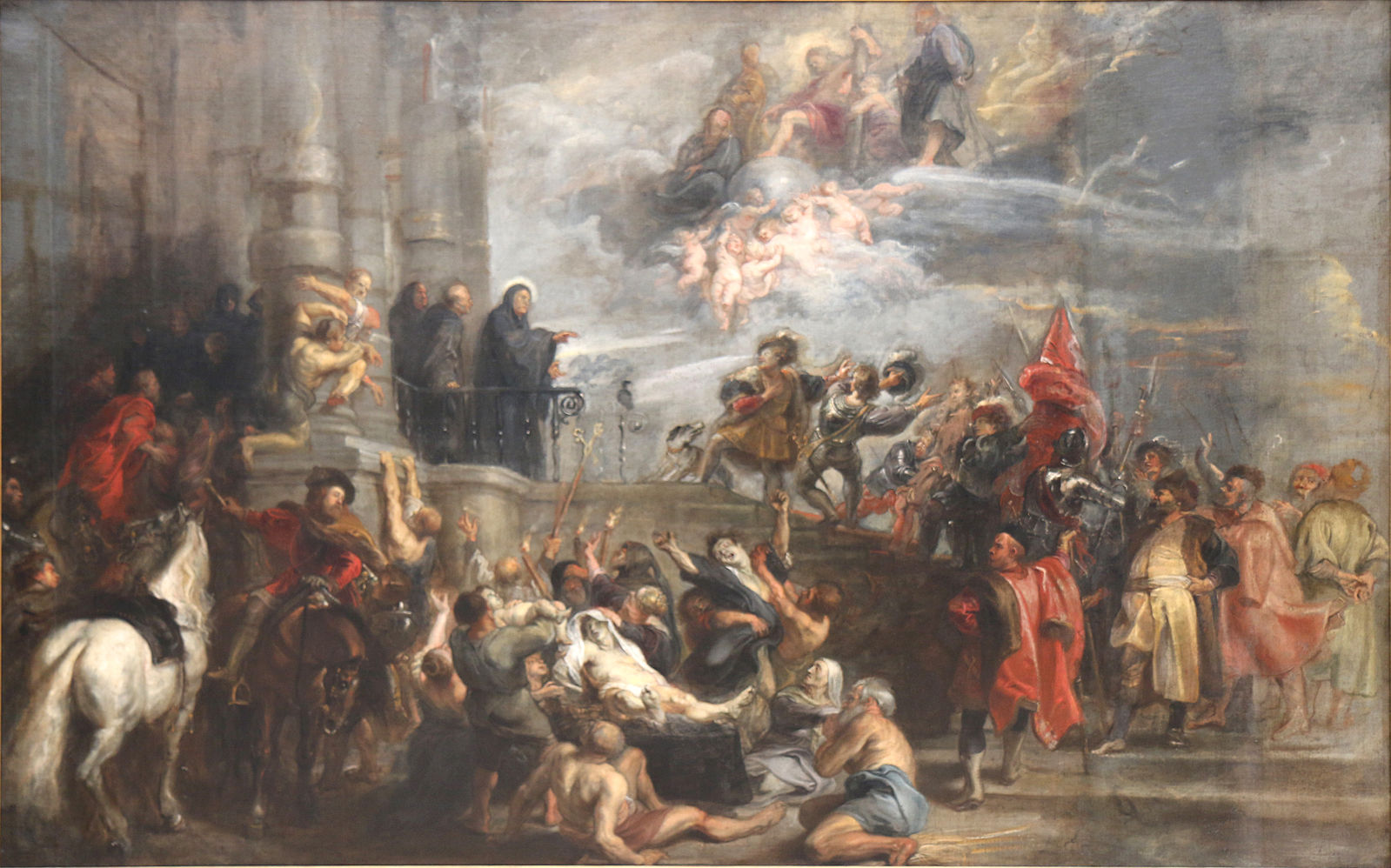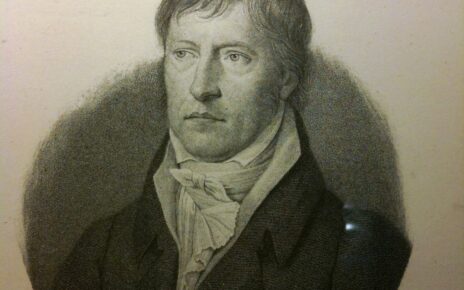The following is published in three installments.
Jacques Derrida’s prolonged and intimate proximity to the thought of Martin Heidegger has played a significant role in the understanding and debate of Derrida’s religious inflections and in the theorizing of the relationship between deconstruction, religion, and politics in general. This proximity becomes particularly clear in the treatment of spirit [Geist]: over decades and across texts, Derrida continually returned to analysis of Heidegger’s use of this term and concept as a way of working through his predecessor’s relationship with faith and religion, with Nazism, with worldliness, language, poetry, and other fundamental avenues of Heidegger’s thought.
In essence, Derrida saw spirit as a particularly powerful lens through which to interpret Heidegger’s conceptual trajectory. This necessitated, for Derrida just as any other reader of Heidegger, an interrogation of spirit’s place in Heidegger’s political beliefs and the extent to which early conceptual commitments regarding spirit and faith necessitated his turn towards Nazism as well as the nationalistic nostalgia he maintained long after his formal association with the party ended.
By taking the recently translated Geschlecht III: Sex, Race, Nation, Humanity[1] alongside late works like “Abraham, the Other,” the picture of a set of political concerns which are present throughout Derrida’s corpus appears as rooted in his persistent interrogation of Heidegger’s shifting usage of Geist.
In the first two sections of this paper, I trace Derrida’s writings on Heidegger’s spirit, first in Being and Time and then in both the rectoral address at Freiburg and Introduction to Metaphysics, all of which Derrida readsin “Faith and Knowledge: The Two Sources of ‘Religion’ at the Limits of Reason Alone” (1983) and Of Spirit: Heidegger and the Question (1989). Given the number of texts at play, as well as my primary concern with the insights brought out by newly translated work, my exegetical work in these sections will necessarily be schematic.
In the third section, I read Derrida’s assessment of Heidegger’s 1953 essay on the German poet Georg Trakl, “Die Sprache im Gedicht,” and argue that GIII represents a place in Derrida’s writing where interrogation of spirit as both a concept and as a figure in Heidegger’s thought overlaps with his thinking on religion and faith, and represents a point of transition to thinking of these concepts as overtly intertwined with political concerns.
In GIII Derrida challenges Heidegger on his questioning of Trakl’s Christianity, and suggests that Heidegger – through his insistence that Trakl’s Christian motifs can be reduced down to a primordial Germanic spirituality – himself falls into the trap of programmatic thinking which so much of Heidegger’s middle and late writings were devoted to outlining and castigating. Heidegger, in “Die Sprache im Gedicht,” attempts to show that Trakl’s supposed Christianity is in fact not that at all, but rather some other originary spirit that comes prior to religion and which is rooted in the attachment he has to German language and land.
Articulated in response to this, an understanding in GIII of the ‘Christian in crisis’ as authentically faithfully Christian is what, I argue, is the prelude to Derrida’s own notions of God and faith found in the later texts and particularly to how Derrida’s thinking on ‘Judeity’ is bound up with politics, especially as it appears in “Abraham, the Other” (2003). It is because of his oeuvre-spanning attentiveness to Heidegger and the way he manipulates spirit towards ghastly political ends that Derrida arrives at this quasi-theological movement.
Given this intertextual and interpersonal relationship, the recently translated Geschlecht III occupies an important place among Derrida’s texts for those seeking to understand the relationship between these two thinkers, particularly on the topics of religion and politics. Heidegger is often seen as Derrida’s closest interlocutor, a relationship which is often at once tendentious and critical, though as others have said, Derrida never simply writes against Heidegger, particularly regarding religion. As Derrida writes in “A Silkworm of One’s Own,” his prayer shawl has been “woven in” to all of his texts on Heidegger.
Reading Faith and Spirit in Being and Time
In his readings of Heidegger’s earliest sustained engagement with Geist, Derrida does not explicitly confront the political resonance the term would later take up for Heidegger. For this reason, attention to Heidegger’s early texts plays a small yet important role in understanding the relationship spirit, politics, and faith will take up for Derrida at a later point. To this end, a brief explication of the roots of Heidegger’s spiritualized Nazism is valuable. What appears clearly in Derrida’s writing on Being and Time[2] is that he sees a form of faith at the heart of the text’s project and thus at the outset of Heidegger’s systematic thinking on Being.
Across a number of texts Derrida begins to articulate the ways in which Heidegger unknowingly intertwined spirit and faith such that they cannot be unraveled, a relationship which grows into the tie between spirit and Nazism. Between “Faith and Knowledge” and Of Spirit, Derrida identifies faith at the root of the very possibility of the questions Heidegger puts forward in BT, working against the common interpretation of that textas the apotheosis of Heidegger’s de-theologizing of his early sources like Augustine, Paul, and Pascal, and despite Heidegger’s own insistence on the efficacy of the project of Destruktion.
This latent faith – despite the circumscription Heidegger attempts to maintain throughout BT – leads to the conceptual possibilities for spirit being left open, through which they metastasize over the following years through public texts like “The Self-Assertion of the German University” and Introduction to Metaphysics, as well as in the (at the point of Derrida’s writing unknown and unavailable) Black Notebooks.
Derrida’s critical reading of Heidegger’s distinction between faith or the divine and religion appears sharply in §18 of “Faith and Knowledge” regarding Heidegger’s assessment of the Romans: “As for the ‘Roman,’ does not Heidegger proceed, from Sein und Zeit on, with an ontologico-existential repetition and rehearsal of Christian motifs that at the same time are hollowed out and reduced to their originary possibility?”[3] Ultimately failing at the goal of extricating himself from a religious, and specifically Christian atmosphere, Heidegger’s de-theologizing movement – which sets up the stakes of the question of Being itself – is left incomplete, and this residue remains operative throughout his corpus. In arguing this, Derrida offers the distinction between revelation and revealability as a signpost:
In its most abstract form, then, the aporia within which we are struggling would perhaps be the following: is revealability (Offenbarkeit) more originary than revelation (Offenbarung), and hence independent of all religion? … Is this not the place in which ‘reflecting faith’ at least originates, if not this faith itself? Or rather, inversely, would the event of revelation have consisted in revealing revealability itself, and the origin of light, the originary light, the very invisibility of visibility? This is perhaps what the believer or the theologian might say here, in particular the Christian of originary Christendom, of that Urchristentum in the Lutheran tradition to which Heidegger acknowledges owing so much.[4]
In other words, Derrida here reads Heidegger’s covert reliance on Christian remnants as bypassing the aporetic question of whether revealability necessarily precedes revelation.[5] To Heidegger, revealability (in, again, a covertly Christian form), as Michael Naas puts it, “ultimately revealed a kind of revealability more originary than all revelation, a sort of ‘originary Christendom.”[6]
If revealability, the possibility of revelation, is for Derrida “the invisibility of visibility,” then it becomes easy to see why, later in FK, he begins to question the possibility of Heidegger’s separation of thinking from religion (of faith from knowledge, as it were), a point where Heidegger is most adamant about his principle that “Belief [or faith] has no place in thought,”[7] which grows out of the project of destruction. As Derrida argues, while Heidegger denounces faith in thought, he relies – at the very opening of BT – on the faith of a shared “pre-comprehension of the meaning of being” in order to orient his project.
As Derrida points out, this supposedly shared, indefinite, hazy preconception of Being “is not an empirical fact,”[8] but rather a trace of faith. It is a necessarily preexistent foundation upon which Heidegger’s ontology is built, similar (as Derrida reads) to the way that God operates in a Christian cosmology.
As Heidegger sets things up at the outset of BT, this preconception is in place prior to any questioning of Being –
Inquiry, as a kind of seeking, must be guided beforehand by what is sought. So the meaning of Being must be available to us in some way…We do not know what ‘Being’ means. But even if we ask, ‘What is “Being”?’, we keep within an understanding of the ‘is’, though we are unable to fix conceptually on what the ‘is’ signifies…But this vague understanding of Being is still a Fact.[9]
Whether or not most readers would agree that this reliance on the “vague average understanding” of Being constitutes faith per se on Heidegger’s part, it is that this is one of the central claims of “Faith and Knowledge” – to open up the possibility that Heidegger leaves faith untouched and that we can see this in writings which serve as the groundwork for his future thought: “… the point of departure of Sein und Zeit resides in a situation that cannot be radically alien to what is called faith.
Not religion, to be sure, not theology, but that which in faith acquiesces before or beyond all questioning, in the already common experience of a language and of a ‘we.’”[10] This is to say simply that what for Heidegger is fact is for Derrida rather a question of faith.
This sense of faith as the predication of the entire program of BT is what connects it to spirit as it appears in BT and beyond. Throughout BT, spirit is invoked only in a circumscribed form, bound by quotation marks limiting its free use and binding it to a colloquial meaning. The “spirituality” gestured towards here that resurfaces in BT is related to Dasein’s unique spatiality, that is to say its temporal worldliness. While Heidegger denies that Dasein’s spatiality is merely due to a merging of a corporeal body with a “spirit,” he goes on to say that it is precisely because of Dasein’s “spirituality” that it can be spatial and corporeal in a way that is different than the vorhanden: “…because Dasein is ‘spiritual,’ and only because of this, it can be spatial in a way which remains essentially impossible for any extended corporeal Thing.”[11]
While the scare quotes serve to distance Heidegger from spirit in this text, he still relies on it in this diminutive form, a form which, according to Derrida, begins a process of “re-Germanization” [12] of Heidegger’s concept of Being, and it is this description of Dasein’s spatiality which will eventually tie spirit to the German people and the German Heimat:
As early as Sein und Zeit, Heidegger takes up the values and the word ‘spirit,’ simply in quotation marks. He thus assumes it without assuming it, he avoids it in no longer avoiding it. To be sure, this un-avoidance now supposes and will henceforth maintain the earlier delimitation. It does not contradict, but confirms and renews the necessity of avoiding (vermeiden), and will always do so. And yet, along with the word, even enclosed in quotation marks, something of spirit…allows itself to be withdrawn from the Cartesian-Hegelian metaphysics of subjectivity. Something which the word “spirit” still names between quotation marks thus allows itself to be salvaged. Spirit returns. The word “spirit” starts to become acceptable again.[13]
Spiritualizing Nazism
The sense in which the spiritual remainder of BT is tied to spatiality will ferment over the six years that span between BT and Heidegger’s inaugural address as rector at Freiburg, in which he first takes up the term freed from delimitation. “The Self-Assertion of the German University” is where Heidegger develops the idea of German higher education as the cradle of the spiritual education of the volk.
That is to say it is in this text where Heidegger identifies the university as the place in which to illuminate to the German student their unique ontological standing as among the people most attuned to the questioning of Being. This is to be facilitated under Heidegger’s leadership by a reanimation of the different arms and aims of the university:
If we will the essence of science understood as the questioning unguarded holding of one’s ground in the midst of the uncertainty of the totality of what-is, this will to essence will create for our people its world, a world of the innermost and most extreme danger, i.e., its truly spiritual world…[14]
This ultimately amounts to Heidegger’s first open step in operationalizing spirit towards the ends of politically-oriented nationalistic nostalgia, although it is couched in the language of a resistance to modernity and mechanistic thinking. To create a “spiritual world” for Germany is, for Heidegger, to reject the progression of Western thought through a fundamentally new orientation of the meaning of scientific inquiry as working towards an ultimately spiritual project.
As Heidegger puts it “‘spirit’ is neither empty cleverness, nor the noncommittal play of wit, nor the endless drift of rational distinctions, and especially not world reason; spirit is primordially attuned, knowing resoluteness toward the essence of Being.”[15] What Heidegger describes here in negative terms would, if inverted, represent a pithy version of the critiques of modernity found in texts like “Age of the World Picture” or, as we will come to see, Introduction to Metaphysics. It is crucial to note that this deployment of spirit is also, to follow the logic of Derrida’s reading of BT, to embed faith in the Nazi project via spirit, since spirit and faith have been tied together from the outset of Heidegger’s project.
Derrida spends a great deal of time reading the rectoral address in Of Spirit and sees an “essential and internal continuity”[16] between the circumspect and hamstrung spirit of BT and the ‘inflamed’ spirit in 1933’s address. This inflammation will eventually, in texts like Introduction to Metaphysics and the Black Notebooks, be openly put to work towards the political and metaphysical ends of National Socialism. It is quite clear from Of Spirit that Derrida sees deep threads running between Heidegger’s earliest work – with particular attention to BT – and his political positions as the second world war approached.
To put the progression as Derrida sees it thus far in simple terms, a form of faith is the unspoken justification for any questioning after Being that Heidegger proposes; and if spirit as defined in the rectoral address is, in essence, the ability to question after Being, then it appears to be impossible for Heidegger to think questioning without faith. The question then becomes – if one wishes to follow Heidegger’s hermeneutic to any extent – how to think about faith and Being without following Heidegger’s path towards such vile political ends.
Jake Sirota is a graduate student at the University of Chicago, specializing in philosophy of Religion. He specializes in continental philosophy of religion, deconstruction and religion, religion and naturalism, phenomenology, modernity and dis/re-enchantment, queer issues, postcoloniality, and religion in the public sphere. This article appears in the Journal for Cultural and Religious Theory Vol. 21, No. 1.
______________________________________________________________________________
[1] Jacques Derrida, Geschlecht III: Sex, Race, Nation, Humanity, trans. Katie Chenoweth and Rodrigo Therezo (Chicago: University of Chicago Press, 2020). Hereafter referred to as GIII.
[2] Martin Heidegger, Being and Time, trans. John Macquarrie and Edward Robinson (New York: Harper and Row), 1962. Hereafter referred to as BT.
[3] Jacques Derrida, “Faith and Knowledge: The Two Sources of ‘Religion’ at the Limits of Reason Alone.” In Acts of Religion, trans. Gil Anidjar (New York: Routledge, 2002), 54. Italics in original.
[4] Ibid., 54.
[5] Similar issues of precedence in Heidegger will reappear for Derrida later regarding the Ort of Being in “Die Sprache im Gedicht.”
[6] Michael Naas, Miracle and Machine: Jacques Derrida and the Two Sources of Religion, Science, and the Media (New York: Fordham University Press, 2012), 324.
[7] Heidegger, “The Anaximander fragment,” cited by Derrida, FK, 94.
[8] Ibid., 96.
[9] BT, 25.
[10] FK, 96.
[11] BT, 368.
[12] Jacques Derrida, Of Spirit: Heidegger and the Question, trans. Geoffrey Bennington and Rachel Bowlby (Chicago: University of Chicago Press, 1989), 23.
[13] loc. cit.
[14] Martin Heidegger, “The Self-Assertion of the German University,” in Philosophical and Political Writings, edited by Manfred Stassen (New York: Continuum, 2003), 6.
[15] Loc. cit. This is the first direct definition of spirit we get from Heidegger’s writings.
[16] Of Spirit, 35.




